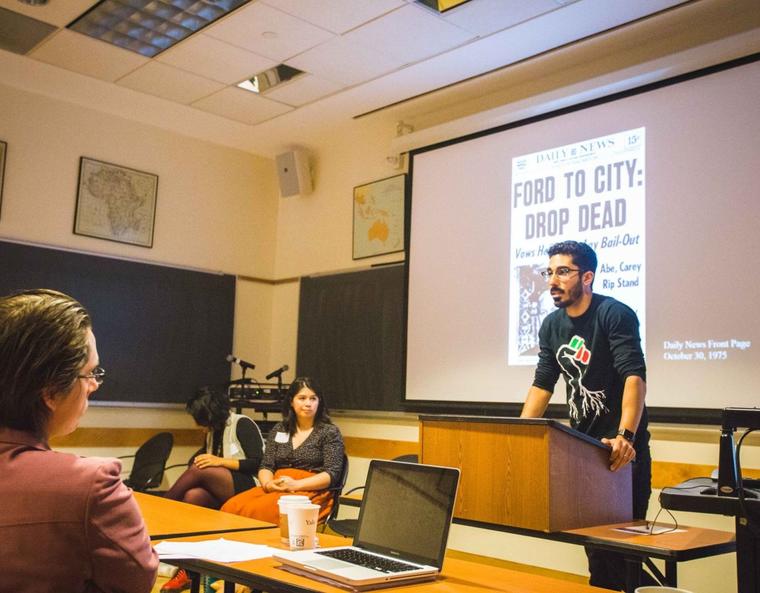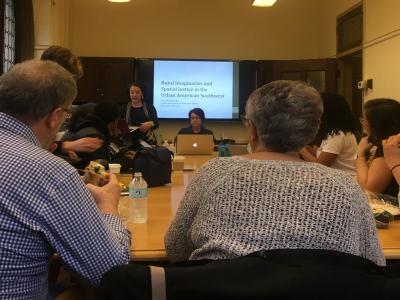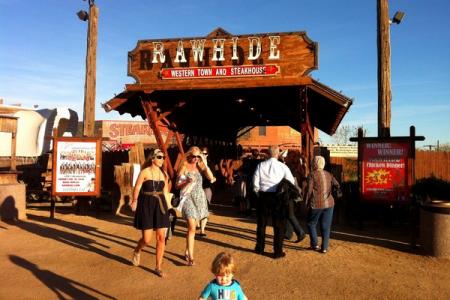
Last February Yale’s President Peter Salovey announced the creation of the Center for the Study of Race, Indigeneity, and Transnational Migration (RITM). The new academic center is one of many initiatives announced under the umbrella of “A More Inclusive Yale” - the Yale Administration’s response to some community concerns about inclusion and diversity that came to the fore last fall. The RITM Center is devoted to advancing intellectual work related to Ethnic Studies and houses the undergraduate Ethnicity, Race, and Migration (ER&M) program. The RITM Center hosts public events on campus about race, gender, sexuality, and Native and diasporic communities in the United States and around the world.

Last week, I attended an RITM lecture led by American Studies professor Laura Barraclough titled “Rural Imaginaries and Spatial Justice in the Urban American Southwest.” Professor Barraclough is an Assistant Professor of American Studies and Ethnicity, Race, and Migration at Yale, and her research focuses on archival, ethnographic, and spatial analysis of urban life and culture. In her lecture, she touched on the construction of rural imaginaries in the American Southwest, specifically in terms of the history of charreria in Mexico and rodeo in The United States. Charreria is the official national sport of Mexico and involves equestrian competitions consisting of horse riding, roping and cattle handling. Similarly, rodeo involves horses and other livestock, originally designed to test the skill and speed of the cowboys and cowgirls. In her lecture, Professor Barraclough explained how charreria traveled from Mexico to the United States in the 19th century. Yet, today’s perception of rodeo revolve around American, often white, history, neglecting to recognize a Mexican narrative.


Originally, I attended the lecture to complete an assignment for a class titled “Intro to Ethnicity Race and Migration,” taught by Alicia Camacho, a professor of American Studies and ER&M. Professor Comacho’s work focuses on transnational migration, border governance, and social movements in the Americas. In class, we learn about the historical roots of contemporary ethnic and racial formations and competing theories of ethnicity, race, and migration.
The whole lecture was amazing. My roommate and I are taking the class together and we both found the lecture totally fascinating. We had a great time discussing Professor Barraclough’s work, asking her questions, and learning about how to get involved. I was happy to engage in discussions with scholars and individuals who are equally invested in historical narratives as I am. As a prospective history or ER&M major, I also enjoyed the opportunity to learn about the work that I could engage with either over a summer or post-Yale.
As I mentioned before, the RITM center is new, but it has tremendous potential for growth. There is a lot of interest across campus for this type of exciting scholarship. My “Intro to Ethnicity, Race, and Migration” class alone has nearly 100 students enrolled. I’m also happy to see that Yale has allocated the resources and money to ensure that students learn about work that many of us have never been exposed to before. It is wonderful to see how one course can showcase on-campus resources, events, and scholars that I might have never encountered otherwise. I am really excited for the future.